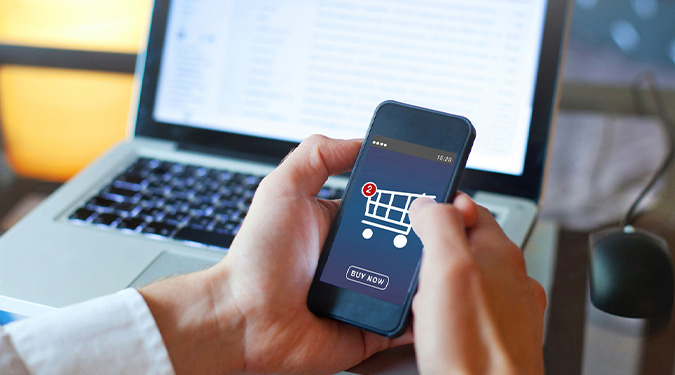Table of Contents
Now more than ever, B2B buyers expect a seamless and sophisticated shopping experience that integrates directly with their internal systems. In today’s hyper-competitive environment, there is more pressure than ever for suppliers to simultaneously deliver on customer expectations and achieve a high return on investment (ROI).
Buyers tend to favor suppliers who offer integration capabilities because it streamlines and provides more control over procurement spending, makes ordering easier with real-time access to negotiated pricing and accurate inventory levels, and reduces errors and delays in the purchasing process. But the benefits of connected commerce extend far beyond buyers alone. Suppliers who invest in technologies that enable them to accommodate their customers’ preferred buying experience see revenue growth via new and existing customers, accelerated payment timelines, and enhanced efficiency.
Data-Driven ROI Analysis Proves Impressive Results
Hobson and Co, a leading research firm focused on ROI studies, conducted independent research consisting of in-depth interviews with numerous TradeCentric supplier customers in a range of industries to gauge ROI and benefits for connected commerce solutions. An excerpt of the full report is below.
The results of the study showed impressive results as companies reported an average ROI of 762% over a three-year period. Companies that implement TradeCentric’s PunchOut Solution, Purchase Order Automation and Invoice Automation solutions generally pay back the initial cost of implementation in less than 6 months. Overall, customers cited TradeCentric as a partner that provided a quick and compelling ROI via solutions that both improve operations and drive revenue growth with existing eCommerce customers, as well as enable suppliers to win business from new large customers.
Universal B2B Commerce Challenges for Suppliers
Suppliers are always seeking strategies to sell more and expand their eCommerce businesses, and meeting buyers’ expectations about how they want to buy plays an important role in increasing online sales.
Buyer purchasing habits have evolved drastically over the past few decades, and they will keep evolving as eProcurement technology continues to gain widespread traction. More than ever, buyers expect their suppliers to offer a streamlined purchasing experience via eProcurement integration. Long gone are the days when an eCommerce site alone would satisfy sophisticated buyer requirements. Now, it is becoming a common expectation for suppliers to support integration capabilities that allow a buyer to shop their suppliers’ eCommerce sites from directly within their eProcurement solution. Additional functionalities that are being requested – and in some cases required – include purchase order automation and invoice automation, which allow purchase data to flow automatically and seamlessly between buyer eProcurement systems and supplier eCommerce systems.
If suppliers lack the ability to integrate with their customers’ eProcurement systems, buyers are highly likely to favor competitors who can. Suppliers should be proactive rather than reactive to customers’ vendor integration requirements. Understanding and anticipating buyers’ evolving eProcurement strategy will help suppliers stand out among the competition.
In short, it is absolutely critical for suppliers to invest in connected commerce solutions to retain existing customers and compete for new business. Those that do will position themselves to become preferred suppliers for new and current customers.
Qualitative and Quantitative Benefits of Connected Commerce
TradeCentric’s connected commerce solutions enable B2B suppliers to meet their customers where they want to buy. Offering buyers eProcurement integration capabilities supports two key business objectives for suppliers: sales growth and improved operations.
While it may initially seem more cost-effective to build eProcurement integrations in-house, it is important to understand the opportunity cost of the dozens (if not hundreds) of hours IT spends each year building those integrations. Even after the initial build, which requires testing, integrations still require ongoing maintenance to preserve proper connections. As a company grows and expands its customer network, the number of required integrations will accelerate and scale, requiring even more IT resources and time. Spending too much time creating new integrations or maintaining existing connections diverts the technology team’s attention away from higher organizational priorities or core competencies, causing suppliers to miss valuable opportunities to capitalize on the fast-growing revenue stream of digital commerce.
Partnering with an experienced eProcurement integration platform drastically reduces the time and effort required to get integrations up and running. TradeCentric is committed to maintaining integrations to more than 150 of the leading eProcurement systems, which reduces the effort and risk of companies trying to maintain all of these integrations themselves one by one, especially given the dynamic nature of these systems ever changing with updates. Customers from the TradeCentric ROI study reported a 60% reduction in IT time to set up and manage eProcurement integrations with all buyers, meaning IT resources can be deployed to other areas of the business. This means suppliers can connect to customers faster and accelerate their time to increased revenue via new business, all while providing leverage to internal resources.
A program manager at a major manufacturer found similar results and shared “Now we don’t have to recreate the wheel every time we add a new customer. IT is not involved in adding a new customer which has saved thousands of hours.”
There are additional benefits beyond an easier buying process for customers. The B2B selling process has historically been tedious and manual, which often translates to higher costs and lengthy timelines. Without connected commerce solutions, suppliers must manually process invoices and purchase orders. For some suppliers, this means rifling through hundreds or thousands of paper purchase orders a month or searching through countless emails for PDFs. Even when suppliers receive the documents, they also must often reformat invoice and purchase order data into their customers’ required formats. When employees are spending countless hours manually reviewing and inputting purchase order and invoice data, they are unable to dedicate time to managing their relationships with customers or building out strategies for increasing sales. This can also lead to a higher error rate throughout the transaction.
Investment in automation significantly reduces the time companies spend entering, correcting and integrating invoices to their eCommerce systems. For companies leveraging PunchOut, Purchase Order Automation and Invoice Automation, TradeCentric’s 3-way matching automatically cross-references requisitions, purchase orders and invoices to ensure consistency and reduce error. In fact, Hobson and Co.’s ROI study found a 75% reduction in time spent on invoice management. This saved time in processing invoices directly translates to an easier reconciliation process and a faster payment timeline.
A senior manager of eProcurement and integration for a national retailer stated, “TradeCentric automatically matches POs to Invoices. We can see if an invoice is going to fail in advance and correct it before it gets rejected in the buyers’ procurement system. This drastically reduces time on reconciliations, as well time spent by our credit and collection team chasing customers for payments.”
Other benefits reported by customers in the study include:
- Reduced time spent on purchase order management
- Growth in digital revenue from existing buyers as a preferred supplier
- Increased attractiveness to new larger customers
- Reduced days in Accounts Receivable
Download the report to learn the immediate and demonstrated return for real TradeCentric customers leveraging B2B commerce integration solutions.





